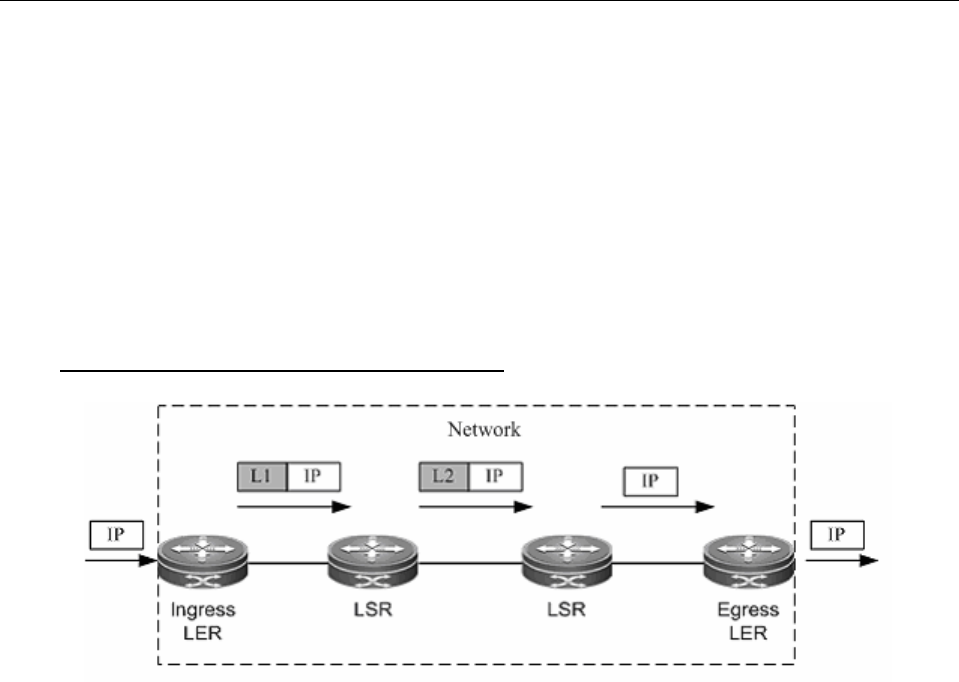
DES-7200 Configuration Guide Chapter 1 MPLS Configuration
1-7
MPLS node must run one or more routing protocols (including static routes) to exchange routing
information with other MPLS nodes on the MPLS network. Judged from the control plane, each
MPLS node is in nature an IP router. Similar to a traditional IP router, unicast routing protocols
(including static routes) are also enabled to create and maintain a routing table on an MPLS
node. The traditional router uses the routing table to create a forwarding table. The MPLS node,
however, uses the routing table to exchange label binding information between each destination
subnet and adjacent MPLS nodes. The protocol that is responsible for exchanging label binding
information is the LDP.
1.1.5 MPLS Forwarding Actions
Figure 3 Forwarding process of MPLS packets that support PHP
The following takes traditional IP routing services as an example to show the MPLS
forwarding process:
1. Enable traditional routing protocols (OSPF or IS-IS) on all LSRs (including LERs) and
create IP routing tables on the LSRs and LERs.
2. Set up an LDP LSP based on the IP routing table.
3. Upon receipt of an IP packet, the ingress LER analyzes the IP packet header and maps it
to an FEC. The ingress LER then adds the label L1, to which the FEC corresponds, to
the packet and sends the labeled packet to the next hop LSR along the LSP.
4. The next-hop LSR receives the labeled packet, searches the LSP based on the label of
the stack top, and then forwards the packet to the next-hop LSR on the LSP after
replacing the label.
5. The intermediate LSRs perform the same actions as 4.
6. Upon receipt of the labeled packet, the PHP LSR searches the label forwarding table
and pops out the label after learning that the outgoing label is the implicit null label 3.
The PHP LSR then forwards the original IP packet to the last-hop LSR. If the outgoing
label is the explicit null label, the PHP LSR pops out the label and directly sends the
original packet based on the routes of the IP header in the IP forwarding table.


















